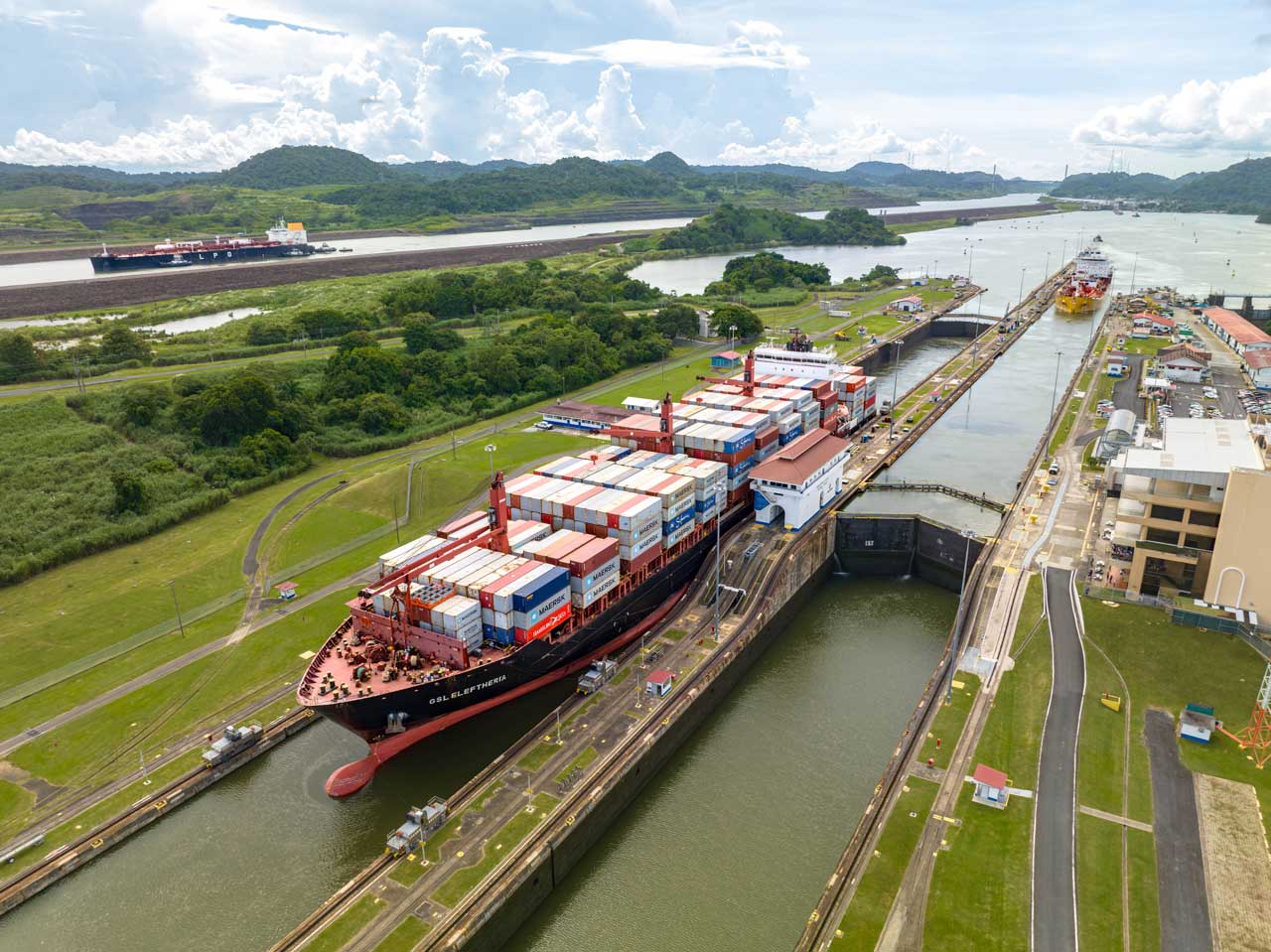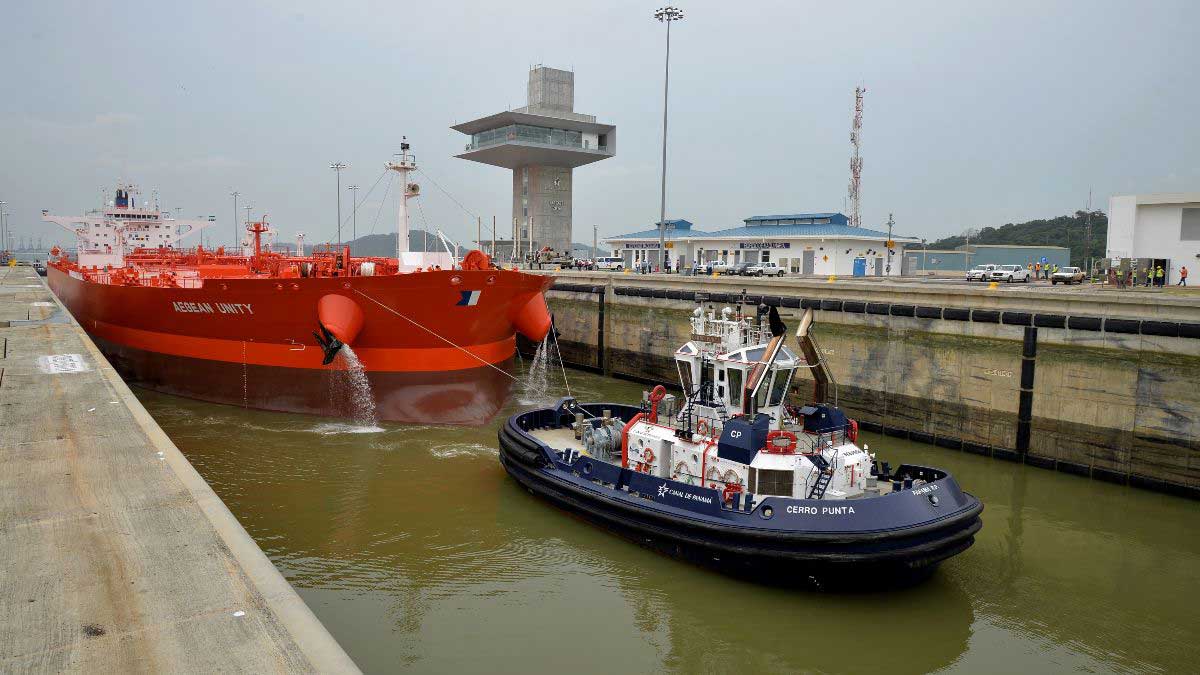PANAMA CITY, Panama, July 28, 2003 – The Panama Canal Authority (ACP) today announced third quarter operational metrics that indicate the Canal is operating more safely and efficiently than ever before in its 89-year history. Third quarter results demonstrate an increase in tonnage and a reduction in Canal Waters Time (CWT), the average time it takes a vessel to navigate the Canal including time waiting for passage. The ACP also announced that the Canal safety record has improved with a decline in maritime accidents year-to-date compared to the first three quarters of FY2002.
The ACP attributed the improvements to its complete focus on operational improvements and its ongoing modernization and improvement projects. Today, the ACP welcomed the arrival of six new locomotives to the ACP’s already increased fleet. Other improvement projects include an upgraded and bolstered tugboat fleet, enhanced locomotive tow tracks and the replacement of locks controls and machinery. These improvements have allowed the ACP to continue to improve the quality of transit service for customers.
The Canal reduced CWT from 25.6 hours during the third quarter (April through June) of FY2002 to 21.4 hours during the third quarter of FY2003, reflecting a 16.4 percent improvement, or 4.2 hours transit time reduction. In addition, Canal PC/UMS tonnage increased during the third quarter compared to a year ago, rising from 59,810,870 million PC/UMS in the third quarter of FY2002 to 60,214,717 million PC/UMS during the third quarter of FY2003.
The ACP also has continued to make important strides in safety. For the first three quarters of FY2003, there was a total of nine maritime accidents compared to 16 accidents in the first three quarters of FY2002 – representing a 43.8 percent drop in official accidents. An official accident is one in which a formal investigation is requested and conducted.
“When our customers transit the Canal, they know that the ACP is doing everything possible to make transits safer and more efficient. Our priorities are our customers’ priorities. These figures exemplify how the ACP’s shift to run the Canal as a market-oriented business has improved the operations of the world’s global gateway. The ACP has enthusiastically met the challenge of helping our customers deliver their goods to world consumers in a timely and efficient manner,” said Canal Administrator, Alberto Alemán Zubieta.
The ACP’s dedication to a program of permanent modernization has continued in making the Canal run efficiently, improving safety and operational capacity and permitting more flexible traffic scheduling and enhanced navigation. In addition, the Canal has implemented an advanced tracking system that pinpoints transiting ships and allows the ACP to act immediately if an incident were to occur.
Current Canal modernization projects will continue to improve the Canal’s operations. The July 1, 2003 implementation of the Automatic Identification System (AIS) will strengthen the ACP’s management of the Canal’s traffic flow, safety of navigation and security of the waterway and the vessels that use it.
About the Panama Canal Authority
The Panama Canal Authority is the autonomous agency of the Government of Panama in charge of managing, operating and maintaining the Panama Canal. The operation of the Panama Canal Authority is based on its organic law and the regulations approved by its Board of Directors. For more information, please refer to the Panama Canal Authority’s website: http://www.pancanal.com/.
The Authority’s responsibility to the Panamanian people is paramount. The Canal belongs to the people and benefits from the Canal should accrue to as many Panamanians as possible. The Authority will plan its future so that it will continually contribute to the economic development and welfare of the people of Panama.
For nearly 90 years, the Panama Canal has served as the global gateway – a pathway for the shipment of major world commodities. Since the end of 1999, the Panama Canal Authority (ACP) assumed the responsibility for the management, operation and modernization of the Canal and the protection and conservation of its watershed. In the past four years, the ACP has made significant strides – shifting to a market-oriented business model focused on customer service and reliability, making major capital investments for new and modern equipment and machinery, increasing safety and operational efficiency for customers, decreasing the time it takes ships to travel through the Canal and widening and deepening sections of the waterway. An important transportation link, the Canal services more than 140 different transportation routes from every corner of the globe. It is where major trading routes of the world connect and intersect providing safe, reliable and secure passage for all vessels.




